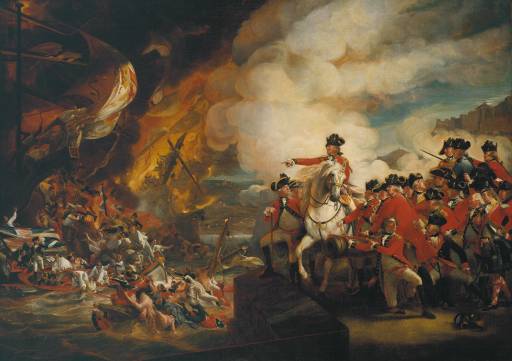
“Portrait and history painter. Born 3 July 1738, probably at Boston, where his parents
were recent Irish immigrants; died London 9 September 1815. Elected ARA 1776; RA
1779. In Boston, more or less self-
Copley’s English style is curiously different from his New England style
in portraiture. His portrait arrangement are much more sophisticated and owe a good
deal to the latest English portraits he had seen – even though many of his early
London sitters had American connections. He exhibited at the Royal Academy from 1776-
He also had a considerable practice in portrait painting (he was charging 100 guineas for a full length in 1783) and is at his best showing people in their public character. His two most remarkable portrait groups – ‘Three Princesses’, RA 1785 (Buckingham Palace) and ‘The Sitwell Family’, RA 1786 (Renishaw Hall) – were severely criticized but are highly original. He also painted a number of religious compositions.
Copley had a difficult and cantankerous nature and spent the years after 1788 feuding with Benjamin West and making life difficult for himself and his fellow Academicians. ‘The Red Cross Knight’ RA 1793 (Washington), a sort of family allegory, shows that he was still capable of brilliant invention. He was the most distinguished painter of the contemporary historical scene in English 18th century painting.”
(Bibliographical source: Waterhouse, Ellis Kirkham. The dictionary of British 18th century painters in oils and crayons. Woodbridge: Antique Collectors' Club, 1981.)

Oil on Canvas
214 x 297 in.
Guildhall Art Gallery, London
